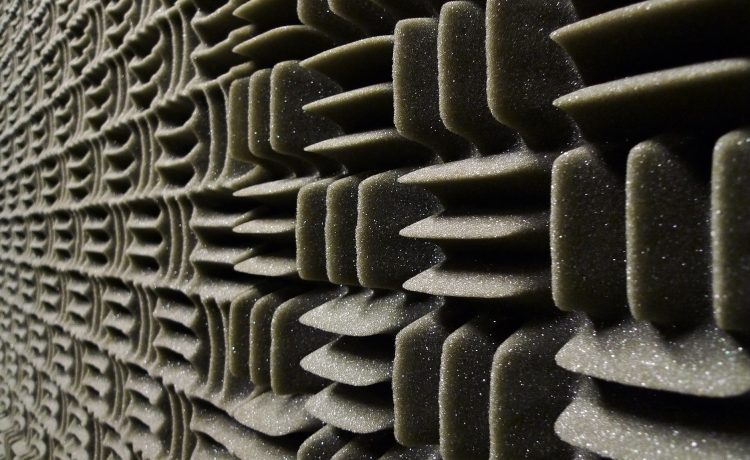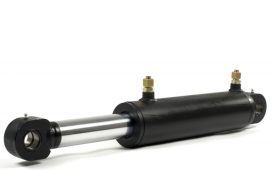When it comes to improving sound quality and managing noise in a room, two types of panels often come up: acoustical wall panels and regular wall panels. They may look similar at first glance, but they serve very different purposes. If you’re considering adding panels to your space, understanding the differences between these two types can help you make the right choice.
What Are Acoustical Wall Panels?
Acoustical wall panels are specifically designed to absorb sound and reduce echo in a room. These panels are made from materials like foam, fibreglass, or polyester that have a unique ability to trap sound waves, turning them into small amounts of heat. This absorption helps to minimise noise reflection, making the space quieter and more comfortable.
You’ll often find acoustical wall panels in places like:
- Offices (for better sound clarity during meetings)
- Schools (to improve speech intelligibility in classrooms)
- Studios (for recording or editing without background noise)
- Cafés and restaurants (to create a more relaxed atmosphere)
The primary goal of these panels is to make spaces sound better by absorbing unwanted noise and reducing reverberation.
What Are Regular Panels?
Regular wall panels, on the other hand, are generally used for decorative or insulating purposes. They can be made from a variety of materials such as wood, drywall, or vinyl and are often installed to enhance the visual appeal of a room, provide privacy, or even insulate a space.
While some regular panels might provide a slight reduction in noise due to their thickness or material, they are not designed for sound control.
Regular panels might be used in:
- Residential homes (for aesthetic appeal or thermal insulation)
- Commercial spaces (for partitioning or privacy)
- Interior design (to add texture or style to a room)
Although they can have some impact on sound, especially if they’re dense materials like wood or concrete, regular panels don’t have the specialised properties required to manage sound reflection or absorption effectively.
Key Differences Between Acoustical and Regular Panels
Now that you understand the basic functions of each panel, let’s explore how they differ in more detail. From their purpose to their materials and performance, here are the key differences that will help you make an informed decision.
1. Purpose and Functionality
The most significant difference between acoustical and regular panels is their purpose. Acoustical panels are specifically designed to control sound, whether that’s reducing noise, preventing echo, or enhancing sound clarity in a room. Regular panels, however, are more about aesthetics or insulation and don’t perform well in sound absorption or soundproofing.
- Acoustical panels: Primarily used for sound control.
- Regular panels: Primarily used for decorative purposes, insulation, or privacy.
2. Materials
The materials used in acoustical panels are key to their sound-absorbing abilities. These materials are chosen for their ability to trap sound waves and reduce reverberation.
Common materials for acoustical panels include:
- Foam: Soft, lightweight, and effective at absorbing high frequencies.
Fibreglass: Dense and durable, used for both sound absorption and thermal insulation. - Polyester: Another absorbent material, often used in eco-friendly panels.
On the other hand, regular panels are often made from materials that don’t offer sound-absorbing properties, like:
- Wood: Great for style, but doesn’t help much with sound control.
- Drywall: Standard for walls, but not designed to manage sound.
- Plastic or vinyl: Used for insulation, but won’t affect noise levels significantly.
- Design and Aesthetics
Both types of panels can be part of a room’s design, but they are often used for different aesthetic purposes. Acoustical panels are typically functional first and decorative second, which means they might not always match the sleek designs of regular panels. However, a modern acoustical wall panel now come in a variety of shapes, colours, and finishes that can blend with any decor.
Regular panels, on the other hand, are usually designed to fit with a room’s style, whether that’s sleek, traditional, or modern. They often have a more finished or polished look and might come in wood, laminate, or painted finishes.
4. Noise Reduction and Sound Absorption
When it comes to sound absorption, acoustical panels are the clear winner. Their design and materials are specifically chosen to absorb sound and reduce reflections, creating a more pleasant and quieter environment.
Regular panels, while they might add some mass to a wall (which can reduce sound transmission), don’t have the same level of acoustic effectiveness. They can’t effectively absorb or diffuse sound to the same extent as acoustical panels. So, while regular panels may provide some level of sound dampening, they won’t stop echo or reverberation in a room.
5. Installation
Acoustical panels are typically easier to install than regular panels when it comes to sound management. They’re lightweight, often come with adhesive backing or simple mounting systems, and are designed for quick installation in any environment where sound control is needed.
Regular panels, depending on their material, may require more complex installation or mounting systems. For example, wooden or vinyl panels might need to be nailed or screwed into the wall, and they may need to be installed with additional framing.
When to Use Acoustical Wall Panels vs. Regular Panels
Choosing between acoustical wall panels and regular panels can be tricky, especially when you’re not sure what you’re looking for. Both have their uses, but their functions and benefits are quite different.
Choose Acoustical Wall Panels If:
- You need to reduce echo or background noise in a room.
- You’re setting up a space like a home office, meeting room, or recording studio.
- You need to improve speech intelligibility in spaces like classrooms or lecture halls.
- You want a more pleasant and quieter environment in public spaces like cafés, restaurants, or conference rooms.
Choose Regular Panels If:
- You’re more concerned about aesthetic appeal and room design.
- You’re using them for insulation or to divide a room, rather than control sound.
- You don’t have significant issues with echo or noise levels and just want to add a little style or privacy.
Conclusion
In short, the main difference between acoustical wall panels and regular panels comes down to their sound performance. Acoustical panels are built to absorb and control sound, creating a better acoustic environment in spaces that need it. Regular panels, though useful for design and insulation, don’t offer the same benefits when it comes to managing noise.
So, before choosing which panels to use in your space, consider the primary function you need: enhanced sound quality and reduced echo or style and insulation. With the right choice, you can transform your space into a much more comfortable and acoustically balanced environment.







